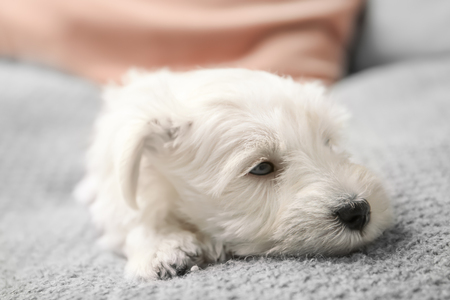Understanding Pet Anxiety: Causes and Signs
Small pets like rabbits, hamsters, guinea pigs, and birds can experience stress and anxiety just like humans. Recognizing what causes these feelings and how they show up in your pet’s behavior is the first step to helping them feel safe and comfortable.
Common Triggers of Stress and Anxiety in Small Pets
Many factors in a pet’s environment or daily routine can lead to stress. Here are some typical triggers:
| Trigger | Examples |
|---|---|
| Loud noises | Vacuum cleaners, thunder, fireworks, loud music |
| Sudden changes | New family members, rearranging furniture, moving homes |
| Lack of hiding spots or space | Cages that are too small or do not have shelters or tunnels |
| Loneliness or boredom | Not enough toys, not enough interaction with people or other pets |
| Poor handling | Rough or frequent handling, especially by children |
| Predator presence (real or perceived) | Other pets like cats or dogs near their cage, even if separated by glass or bars |
Behavioral Signs of Stress and Anxiety in Small Pets
Your small pet can’t tell you when it feels anxious, but it will show certain behaviors. Look for these signs:
| Pet Type | Common Stress Signs |
|---|---|
| Rabbits | Thumping hind legs, hiding more than usual, refusing food, aggressive biting or scratching, over-grooming fur |
| Hamsters | Pacing back and forth, chewing cage bars, sleeping less, becoming more timid or nipping when handled |
| Guinea Pigs | Loud squeaking, freezing in place, rapid breathing, excessive hiding |
| Birds (parrots, parakeets) | Feather plucking, screaming or screeching loudly, loss of appetite, repetitive movements (like pacing on perch) |
Why It Matters to Notice These Signs Early?
If you spot these signs early on, you can make simple changes at home to help your pet feel more secure. Every small animal is different—what stresses one may not bother another—so pay close attention to your own pet’s normal habits and look for changes. When in doubt, talk to an exotic pet vet for advice tailored to your specific animal.
2. Creating a Safe and Comfortable Environment
Making sure your small pet feels safe and comfortable at home is one of the best ways to reduce stress and anxiety. Every animal needs a secure space where they can relax, explore, and feel at ease. Here are some practical tips for setting up an inviting environment that helps your furry (or feathered) friend stay happy and calm.
Choose the Right Location
Pick a spot in your home that is quiet and away from loud noises, drafts, or direct sunlight. Avoid placing your pet’s habitat in high-traffic areas like near the TV or by the front door. This will help them feel less exposed and more secure.
Comfortable Bedding and Hiding Spots
Small pets love having cozy places to snuggle into or hide when they need a break. Provide soft bedding and include hiding spots such as tunnels, huts, or boxes to give them a sense of safety. Here’s a quick guide to popular choices:
| Pet Type | Recommended Bedding | Best Hiding Spot Ideas |
|---|---|---|
| Hamsters | Pine-free paper bedding | Tunnels, wooden huts |
| Guinea Pigs | Fleece liners, hay piles | Igloos, cardboard boxes |
| Rabbits | Soft hay, straw mats | Caves, tunnels |
| Birds | Shredded paper, natural fibers | Nesting boxes, leafy branches |
| Ferrets | Old t-shirts, soft towels | Hammocks, sleep sacks |
Keep Things Clean and Consistent
A clean habitat helps prevent illness and keeps your pet feeling secure. Change bedding regularly and clean food dishes and water bottles every day. Try to keep the layout of their living space consistent so they always know where everything is.
Maintain a Stable Temperature
Most small pets are sensitive to temperature changes. Keep their environment between 65°F and 75°F (18°C–24°C) unless your specific pet has different needs. Avoid placing their cage near windows or heating/cooling vents.
Add Enrichment Items for Relaxation
Toys, chew items, climbing structures, or safe plants can help your pet feel at home and provide mental stimulation without overwhelming them. Rotate toys now and then to keep things interesting while maintaining a peaceful vibe.

3. Establishing Routine and Consistency
Small pets, like rabbits, guinea pigs, hamsters, and ferrets, feel safest when they know what to expect each day. Just like people, they can get anxious or stressed if their environment is unpredictable or constantly changing. That’s why setting up a daily routine and being consistent in your care is so important for their well-being.
Why Routines Matter for Small Pets
A predictable schedule helps your pet understand when it’s time to eat, play, rest, and interact with you. When pets know what’s coming next, they are less likely to feel scared or confused by sudden changes. This sense of stability can greatly reduce stress and anxiety.
Examples of a Simple Daily Routine
| Time of Day | Activity |
|---|---|
| Morning | Fresh food and water; gentle greeting |
| Midday | Quiet time; cleaning cage or habitat |
| Afternoon | Playtime or supervised exercise outside the cage |
| Evening | More social interaction; healthy treats |
| Night | Bedding check; lights out at the same time each night |
The Importance of Gentle Handling
Being calm and gentle every time you interact with your pet helps them learn that you are safe to be around. Always use soft voices and slow movements. If your pet is new or shy, give them time to adjust and never force them out of hiding. Over time, this patient approach builds trust and makes handling less stressful for both of you.
Tips for Maintaining Consistency
- Feed your pet at the same times every day.
- Clean their habitat on a regular schedule.
- Use similar words or sounds when calling them for food or play.
- Avoid loud noises or sudden changes in their environment.
- If you need to change something in their routine (like moving their cage), do it gradually so they have time to adjust.
Quick Checklist: Creating a Calm Environment Through Routine
- Keep feeding and playtimes consistent daily.
- Handle your pet gently and patiently.
- Avoid major changes without warning.
- Create a peaceful area where your pet feels secure.
- Watch for signs of stress, such as hiding or loss of appetite, and adjust routines if needed.
4. Enrichment and Mental Stimulation
Small pets, like rabbits, guinea pigs, hamsters, ferrets, and mice, need more than just food and shelter to stay happy. Providing mental stimulation and enrichment is key to reducing stress and anxiety in your little companions. When small animals are bored, they can develop negative habits like chewing on cage bars or excessive grooming. Let’s explore some easy ways to keep your pet engaged, relaxed, and healthy.
Toys for Every Personality
Offering a variety of toys keeps things interesting for your pet. Choose safe, chewable toys made from wood or natural fibers for gnawing animals like rabbits and guinea pigs. For ferrets and hamsters, tunnels and hideouts are great for exploring. Puzzle feeders encourage problem-solving while providing treats. Rotate toys regularly so your pet doesn’t get bored.
| Pet Type | Recommended Toys |
|---|---|
| Rabbit | Cardboard boxes, willow balls, tunnels |
| Guinea Pig | Chew sticks, hay racks, hidey houses |
| Hamster | Exercise wheels, tubes, nesting material |
| Ferret | Slinkies, interactive balls, dig boxes |
| Mouse | Ladders, paper rolls, climbing platforms |
Exercise: Keep Them Moving!
Just like people, small pets feel better when they move around. Provide exercise opportunities that match your pet’s needs. A playpen filled with safe items lets guinea pigs or bunnies run freely. Hamsters love spinning in wheels (make sure it’s the right size), while ferrets enjoy supervised playtime outside their cage. Regular activity helps burn off energy and reduces anxiety.
Ideas for Active Play
- Create obstacle courses using cardboard tubes and boxes.
- Hide treats around their space to encourage foraging.
- Add new textures like crumpled paper or fleece strips for digging fun.
- Set up climbing platforms for adventurous pets like mice and hamsters.
Interactive Activities Build Trust
Spending quality time with your pet helps them feel secure. Try gentle training sessions with favorite treats to teach simple tricks or recall commands. Talk softly and handle your pet carefully to build positive associations. Even sitting quietly near their enclosure can help shy pets feel more comfortable with you nearby.
Quick Tips for Success:
- Avoid loud noises or sudden movements during playtime.
- Supervise all out-of-cage activities to ensure safety.
- Change up the routine often to keep things fresh and exciting for your pet.
By offering toys, regular exercise, and interactive activities tailored to your small animal’s personality, you’ll create a happier environment that naturally reduces stress and encourages positive behaviors every day.
5. When to Seek Professional Help
Recognizing Signs Your Pet Needs Extra Support
Even with your best efforts, sometimes small pets like rabbits, guinea pigs, hamsters, or birds may still show signs of serious stress or anxiety that require professional attention. Knowing when to reach out for help can make a big difference in your pet’s health and happiness.
Common Signs That Indicate It’s Time for Professional Help
| Behavioral Changes | Physical Symptoms |
|---|---|
| Unusual aggression or biting | Loss of appetite or sudden weight loss |
| Hiding more than usual | Excessive grooming or fur loss |
| Lethargy or lack of interest in toys | Sneezing, coughing, or trouble breathing |
| Repetitive pacing or circling | Diarrhea or changes in droppings |
| Vocalizing more (squeaking, chirping, etc.) | Unexplained injuries or limping |
Finding the Right Professional in Your Area
If you notice any of the above signs, it’s a good idea to consult a veterinarian who has experience with small pets. Not all vets are experts in every species, so look for clinics with “exotic pet” or “small animal” care. You can:
- Ask local pet stores or animal shelters for recommendations.
- Search online directories such as the American Animal Hospital Association (AAHA.org) or the Association of Exotic Mammal Veterinarians (AEMV.org).
- Read reviews from other pet owners in your community on sites like Yelp or Google Maps.
- If behavioral issues are the main concern, look for certified animal behaviorists who specialize in small pets.
What to Expect at the Vet or Behaviorist Visit
The veterinarian will likely ask about your pet’s daily routine, environment, and any recent changes at home. They may do a physical exam and suggest tests to rule out medical problems. For behavioral concerns, a specialist might recommend changes to your pet’s habitat, enrichment activities, or even training techniques specific to their species.

